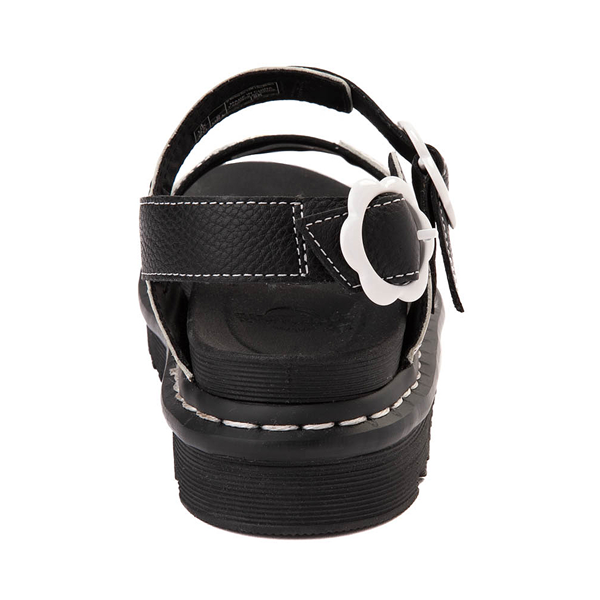Womens Dr. Martens Voss II Floral Sandal - Black / White
Or 4 interest-free payments with
or

Step into spring in style with the Voss II Floral Sandal from Dr. Martens! A stylish update to a modern classic, these cross-band sandals feature Pisa leather straps, adjustable buckle fasteners for a customized fit, allover floral graphics and accents, Goodyear® welt construction, and signature air-cushioned PVC outsoles for durability and traction.
ORDER IN YOUR NORMAL U.S. SIZES
- Durable leather upper made with Pisa, a medium-weight milled nappa leather with a super-soft tumble and rich, waxy finish
- Allover floral graphics for added style
- Criss-crossing forefoot straps
- Adjustable straps with flower buckles for an easy, custom fit
- Cushioned footbed ensures lasting comfort
- Goodyear® welt heat seals and sews the footbed and sole together, providing excellent flexibility
- Air-cushioned PVC outsole delivers premium traction
- Platform height: 1.5"
When the Dr. Martens boot first catapulted from a working-class essential to a countercultural icon back in the 1960s, the world was pre-internet, pre-MTV, pre-CD, pre-mp3s, pre-mobile phones… hey, they’d only just invented the teenager. In the years before the boot’s birthday, April 1, 1960; kids just looked like tribute acts to their parents, younger but the same. Rebellion was only just on the agenda for some - for most kids of the day, starved of music, fashion, art and choice, it was not even an option. But then an unlikely union of two kindred spirits in distinctly different countries ignited a phenomenon.
In Munich, Germany, Dr. Klaus Maertens had a garage full of inventions, including a shoe sole almost literally made of air; in Northampton, England, the Griggs family had a history of making quality footwear and their heads were full of ideas. They met, like a classic band audition, through an advert in the classified pages of a magazine. A marriage was born, an icon conceived of innovation and self-expression.
Together they took risks.
They jointly created a boot that defined comfort but was practical, hard-wearing and a design classic. At first, like some viral infection, the so-called 1460 stooped near to the ground, kept a low profile, a quiet revolution. But then something incredible started to happen. The postmen, factory workers and transport unions who had initially bought the boot by the thousand, were joined by rejects, outcasts and rebels from the fringes of society.
At first, it was the working-classes; before long it was the masses.









 Size Chart
Size Chart






